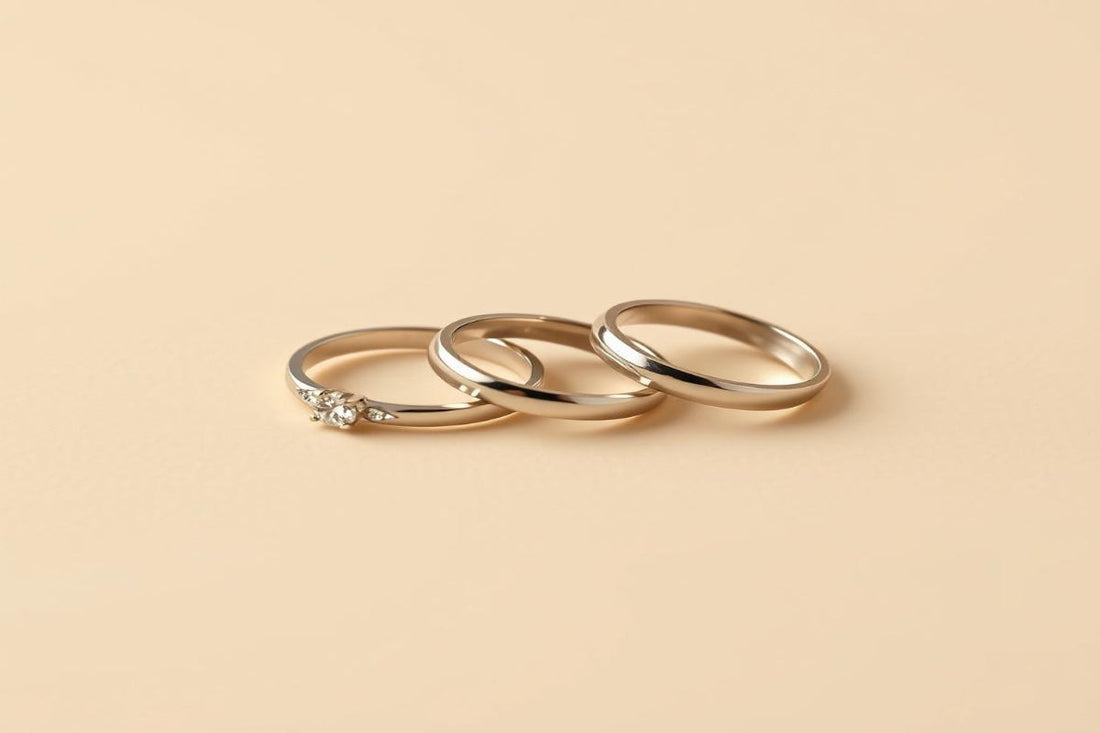
The Definitive Ring Size Chart: International Conversions for EU, US, and UK
Choosing the correct ring size is critical for comfort and security, yet global variations in sizing systems often cause confusion. This comprehensive guide demystifies ring size charts with conversion tables, measurement techniques, and expert insights to ensure perfect fits across regions.
Understanding Ring Size Standards
1. US & Canada
Uses numerical sizes (3–13) based on inner circumference in millimetres. Each full size increases by 0.032 inches (0.81 mm) in diameter. For example:
- US size 6 = 16.5 mm diameter / 51.9 mm circumference.
2. UK & Ireland
Employs alphabetical sizes (A–Z) with half increments. A UK size L corresponds to a US 6 and EU 52.
3. European Union (EU)
Directly lists inner circumference in millimetres (e.g., EU 52 = 52 mm). Germany and Switzerland use inner diameter instead.
4. Asia-Pacific
- Japan/China: Numerical system (e.g., size 12 ≈ 16.5 mm diameter).
- India: Hybrid system combining UK letters and numbers.
International Ring Size Conversion Chart
Below is the most comprehensive ring size chart comparing US, UK, EU, and diameter/circumference measurements. Data aggregated from leading jewellers and standardisation bodies:
| US Size | UK Size | EU Size | Diameter (mm) | Circumference (mm) |
|---|---|---|---|---|
| 3 | F½ | 44 | 14.1 | 44.2 |
| 4 | H | 46 | 14.9 | 46.7 |
| 5 | J½ | 49 | 15.7 | 49.3 |
| 6 | L | 52 | 16.5 | 51.9 |
| 7 | N | 54 | 17.3 | 54.5 |
| 8 | P | 56 | 18.2 | 57.2 |
| 9 | R½ | 59 | 19.1 | 60.0 |
| 10 | T½ | 62 | 19.8 | 62.3 |
| 11 | V | 65 | 20.7 | 65.0 |
| 12 | X | 67 | 21.5 | 67.5 |
How to Measure Ring Size Accurately
Method 1: Professional Jeweller Assessment
Visit a local jeweller for mandrel measurements (±0.1 mm precision). Schedule sizing in the afternoon when fingers are typically largest.
Method 2: Measure an Existing Ring
Place a well-fitting ring on a ruler. Measure the inner diameter and match it to the ring size chart above. For asymmetrical bands, average multiple measurements.
Method 3: String/Paper Strip Technique
- Wrap non-stretchy string around the finger's base.
- Mark the overlap point and measure the length.
- Compare to the circumference column in the chart.
Note: Avoid using elastic materials, and account for knuckle size by ensuring the ring slides comfortably over joints.
Factors Influencing Ring Size
Temperature & Time of Day
Fingers shrink in cold weather and expand in heat. Measure between 3–4 PM for optimal accuracy.
Band Width
Wider bands (≥4 mm) require sizing up:
- 4–6 mm: +0.25 size
- 6+ mm: +0.5–1 size.
Dominant Hand
Size up by 0.25 for the dominant hand, which is often slightly larger.
Common Sizing Mistakes & Solutions
Guessing Based on Clothing Size
Finger and body sizes rarely correlate. Always measure.
Ignoring Manufacturer Variances
Luxury brands like Cartier use proprietary sizing (e.g., UK L = Cartier 52).
Resizing Limits
Platinum can be adjusted ±2 sizes; titanium and tungsten cannot be resized.
Frequently Asked Questions
Q: How do I convert EU ring sizes to UK?
A: Use the circumference (mm) as the EU size. For example, EU 52 = UK L = US 6.
Q: What's the average ring size for women?
A: US 6–7 (UK L–N), but regional variations exist. Men average US 9–11 (UK R–T).
Q: Can I resize an eternity ring?
A: Rarely. Full-gem bands resist resizing; consider ordering 0.5 size larger initially.
Pro Tips for Perfect Sizing
Covert Measurement
Trace a partner's existing ring or compare hand proportions (slender hands ≈ US 4–5).
Climate Adjustments
Cold climates may require smaller sizes; tropical regions often need larger.
Verify Policies
Confirm return/resizing options with retailers before purchasing.
Conclusion
This ring size chart guide equips readers to navigate global sizing systems confidently. Bookmark the conversion table for international purchases, and prioritise professional measurements for high-value items like engagement rings. For further reading, explore our Jewellery Care Guide or 2025 Ring Trends Report.
Share this guide to help others avoid sizing mishaps!
